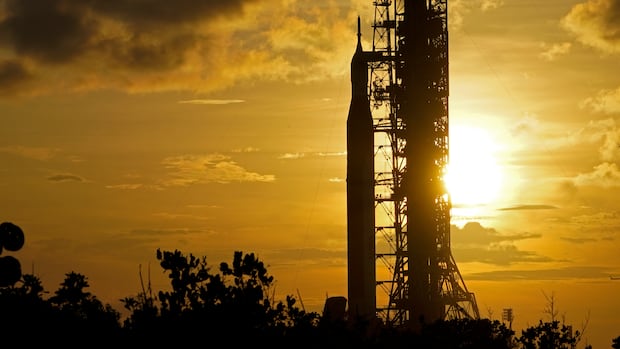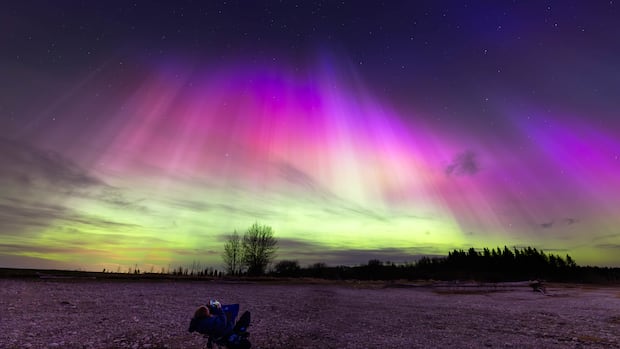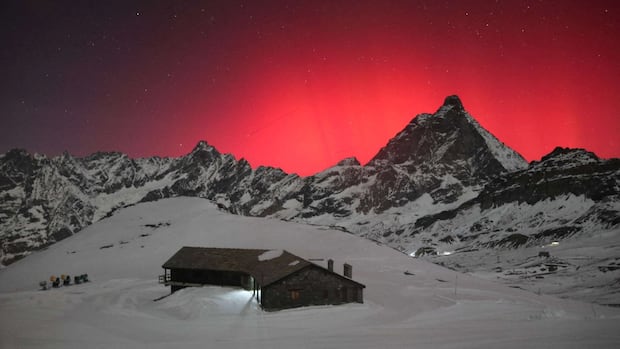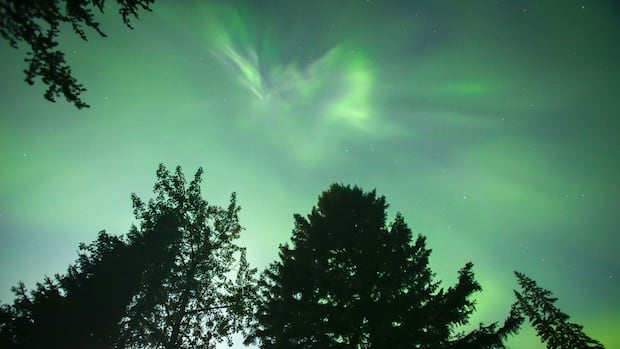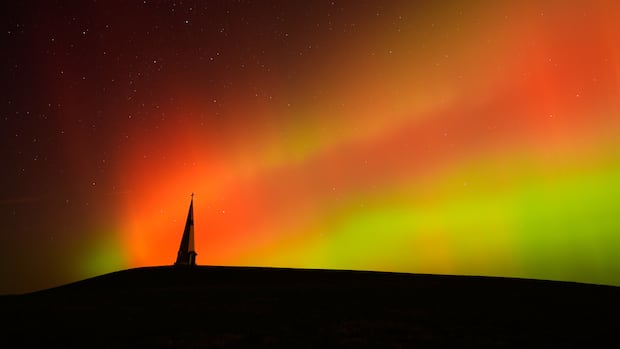Listen to this article
Estimated 5 minutes
The audio version of this article is generated by text-to-speech, a technology based on artificial intelligence.
Solar storms are expected to bring colourful northern lights across much of Canada and northern U.S. states for a second night in a row.
Forecasts from the U.S. National Oceanic and Atmospheric Administration (NOAA) predict the show will be visible across most of B.C., Alberta, Saskatchewan, Manitoba, Yukon, Northwest Territories, Nunavut, Labrador and the northern parts of Ontario and Quebec.
Shawn Dahl, a service coordinator with the Space Weather Prediction Center in Colorado, said the dazzling display is expected to go on for much of the night and peak in intensity between 7 and 10 p.m. ET.
He recommends those heading out to see the display to stay up to date with their local forecasts.
Over the past few days, the sun has experienced several powerful solar flares. They were then followed by coronal mass ejections (CME), explosions of fast-moving particles that travel along the solar wind.
A pair of Earth-directed CMEs reached Earth on Tuesday night.
The lights, also known as the aurora borealis, were seen as far south as New Mexico and Texas.
However, the Space Weather Prediction Center (SPWC) is forecasting that the geomagnetic storm could continue Wednesday night and possibly into Thursday, though perhaps not as strong.
 Canadian astronomer Debra Ceravolo was shocked to see the northern lights in Texas on Tuesday night. (Debra Ceravolo)How northern lights happen
Canadian astronomer Debra Ceravolo was shocked to see the northern lights in Texas on Tuesday night. (Debra Ceravolo)How northern lights happenCanadian astrophysicist Dr. Jesse Rogerson explained phenomenon happens when large clouds of protons and electrons gusted from the sun get caught in the Earth's magnetic field and smash into the atmosphere.
He said these clouds are a result of explosions on the surface of the sun, or solar flares. When they reach our atmosphere, they deposit their energy. The result is the shimmering, moving light display we see made up of various colours.
Rogerson said the best way to see the ambient colours is to head somewhere with a clear view of the sky, preferably as far away from major cities as possible to reduce light pollution.
The sun is at the maximum phase of its 11-year activity cycle, making the light displays more common and widespread.
Colourful northern lights have decorated night skies in unexpected places and space weather experts say more auroras are still to come.
WATCH | The science behind the northern lights:The northern lights are a dazzling spectacle that can be seen across several parts of Canada. According to NASA, we’re currently in the middle of a solar maximum, meaning 2025 could be a better-than-usual year for spotting the northern lights. Press play to learn why the northern lights form!Northern and southern lights are commonly visible near the poles, where charged particles from the sun interact with Earth's atmosphere.
Skygazers are spotting the lights deeper into Canada, the United States and Europe because the sun is going through a major facelift. Every 11 years, its poles swap places, causing magnetic twists and tangles along the way.
WATCH | The sky turned red over the Matterhorn:The rare aurora borealis was seen turning the sky above the Matterhorn mountain red in video taken from Italy's Aosta Valley.Last year, the strongest geomagnetic storm in two decades slammed Earth, producing light displays across the Northern Hemisphere. And soon afterward, a powerful solar storm dazzled skygazers far from the Arctic Circle when dancing lights appeared in unexpected places, including Germany, the United Kingdom, New England and New York City.
The sun's active spurt is expected to last at least through the end of this year, though when solar activity will peak won't be known until months after the fact, according to NASA and NOAA.
How solar storms affect EarthSolar storms can bring more than colourful lights to Earth. When fast-moving particles and plasma slam into Earth's magnetic field, they can temporarily disrupt the power grid.
Space weather can also interfere with air traffic control radio and satellites in orbit. Severe storms are capable of scrambling other radio and GPS communications.
In 1859, a severe solar storm triggered auroras as far south as Hawaii and set telegraph lines on fire in a rare event. And a 1972 solar storm may have detonated magnetic U.S. sea mines off the coast of Vietnam.
In March 1989, a severe solar storm knocked out power across parts of Quebec.
Space weather experts aren't able to predict a solar storm months in advance. Instead, they alert relevant parties to prepare in the days before a solar outburst hits Earth.
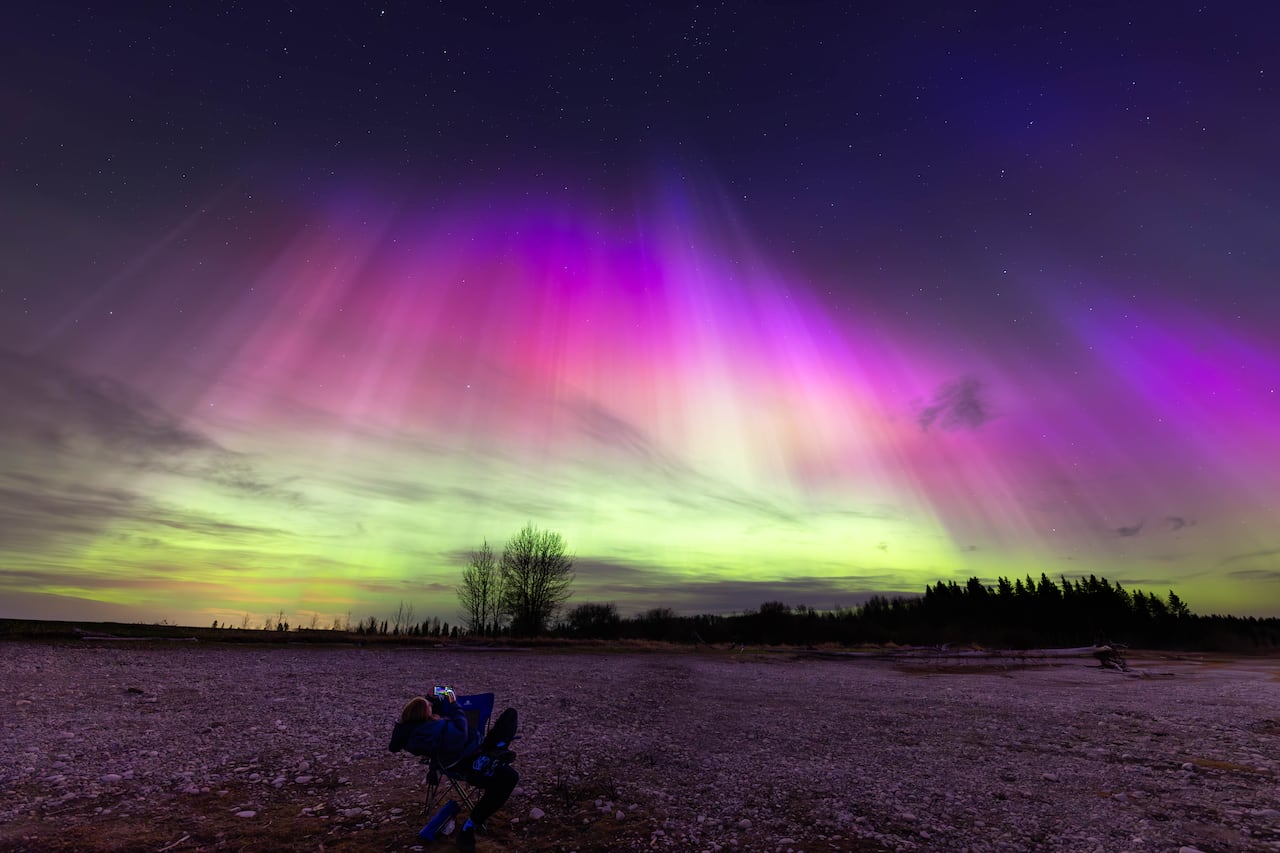 An onlooker gazes up at the spectacular northern lights display on May 10, 80 kilometres from Airdrie, Alta. There is a chance for more northern lights this week. (Chris Ratzlaff)How to see auroras
An onlooker gazes up at the spectacular northern lights display on May 10, 80 kilometres from Airdrie, Alta. There is a chance for more northern lights this week. (Chris Ratzlaff)How to see aurorasNorthern lights forecasts can be found on the NOAA's Space Weather Prediction Center website or an aurora forecasting app.
Consider aurora-watching in a quiet, dark area away from city lights. Experts recommend skygazing from a local or national park. And check the weather forecast, because clouds can cover up the spectacle entirely.
Taking a photo with a smartphone camera may also reveal hints of the aurora that aren't visible to the naked eye.


